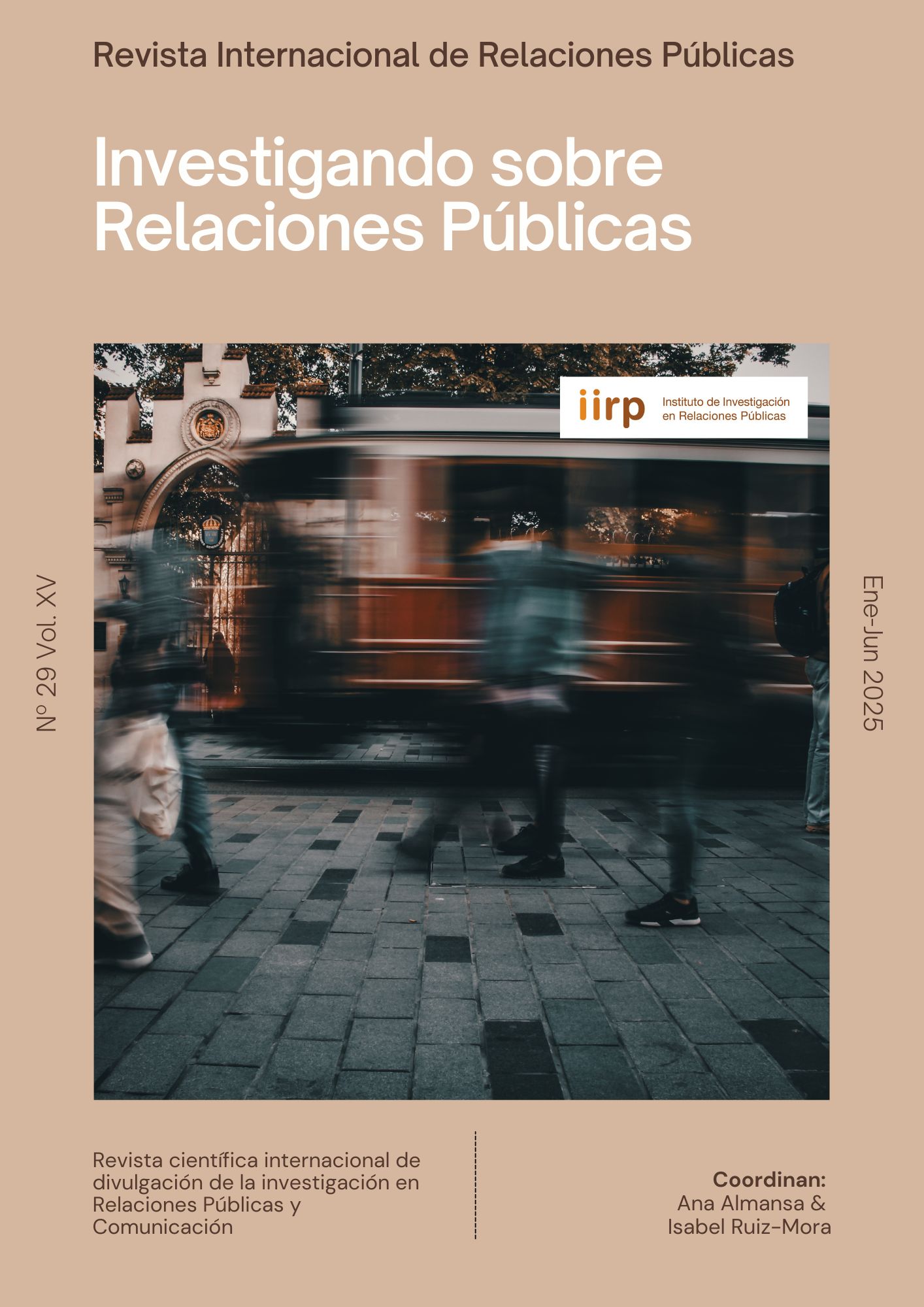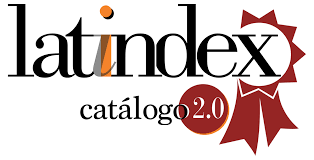Evolution and transformation of the Catholic Church's digital communication
A vision through the celebration of the institutional act of the Jubilee
DOI:
https://doi.org/10.5783/revrrpp.v15i29.895Keywords:
Influencers, Social Networks, Digital Communication, Eclesiastical Communication, Catholic ChurchAbstract
This article analyzes the evolution of digital communication strategies used by the Catholic Church in promoting the Jubilees of 2016 and 2025. Through a comparative study, the main changes in narratives, platforms, and disseminators used in both events are identified and the impact of these changes on audience interaction and engagement on social media. The analysis is based on the observation of official websites and social media accounts managed by the Dicastery for the New Evangelization, an entity of the Holy See responsible for coordinating digital communication for both Jubilees. The study examines the structure, content, and dissemination strategy of the platforms in each period, with particular attention to the formats used, the implementation of hashtags, and the level of user participation. Additionally, it explores the growing influence of Catholic content creators on social media, who have played a fundamental role in promoting the 2025 Jubilee, unlike in previous years when their presence in ecclesiastical communication was negligible. The study's findings indicate that the Catholic Church's digital communication has undergone a significant transformation in the 2025 Jubilee compared to the 2016 Jubilee. While in 2016, the strategy was primarily focused on the unidirectional dissemination of information through Facebook and Twitter —now X— by 2025, a more dynamic and interactive approach has emerged. This shift includes increased use of Instagram, YouTube, and WhatsApp, as well as the launch of a dedicated mobile app for the event. The introduction of new formats, such as reels, live broadcasts, and personalized infographics, has fostered more engaging and participatory communication. Furthermore, a digital mascot, "Luce," has been implemented to connect with younger audiences and those distanced from the Church. In terms of engagement, there has been a notable increase in user interaction with posts related to the 2025 Jubilee compared to those from the 2016 Jubilee. On Instagram, for instance, recent posts have garnered significantly higher averages of likes and comments compared to Facebook posts in 2016. Likewise, reels have reached remarkable viewership numbers, reinforcing the success of the audiovisual strategy implemented in 2025. A key finding of this study is the increasing role of Catholic influencers in promoting the 2025 Jubilee. While no such profiles were involved in disseminating the event in 2016, in 2025, numerous content creators with thousands of followers have actively participated by producing posts, explanatory videos, illustrations, and testimonials, significantly contributing to the event’s outreach. These influencers have successfully captured the attention of diverse audiences, allowing the event’s message to reach people who do not traditionally engage with the Church’s official channels. The impact of these digital figures has been particularly significant on platforms such as Instagram and YouTube, where influencer-generated content has achieved high levels of engagement. Through this comparative analysis, the study concludes that the Catholic Church has achieved a significant evolution in its digital communication, adopting more modern strategies aligned with current trends. The use of more visually driven social media platforms, the incorporation of transmedia narratives, and the involvement of influencers have facilitated greater dissemination and reach for the 2025 Jubilee. The study confirms that the digital strategy has transitioned from an informative and static model in 2016 to an interactive and participatory model in 2025, fostering stronger connections with the audience and a more solid presence in the digital ecosystem. Finally, the study highlights the importance of the continuous adaptation of ecclesiastical communication to technological and sociocultural changes to maintain its relevance in the digital age.
Downloads
References
Aldás Manzano, J. y Uriel Jiménez, E. (2017). Análisis multivariante aplicado con R. Ediciones Paraninfo.
Almansa-Martínez, A. y Fernández-Souto, A. B. (2020). Tendencias y retos de las Relaciones Públicas en el ámbito profesional. Profesional de la Información, 29(3), e290303. https://doi.org/10.3145/epi.2020.may.03
Armentros Moya, D. R. (2024). Estrategias de comunicación digital para la conservación del patrimonio: análisis de la gestión en la Oficina del Conservador de Cienfuegos. Revista Internacional de Relaciones Públicas, 14(28), 169–184. https://doi.org/10.5783/revrrpp.v14i28.877
Balaji, M. S., Jiang, Y., & Jha, S. (2021). Nanoinfluencer marketing: How message features affect credibility and behavioral intentions. Journal of Business Research, 136, 293-304. https://doi.org/10.1016/j.jbusres.2021.07.049
Benedicto XVI (2010). Mensaje para la Jornada Mundial de las Comunicaciones Sociales. https://acortar.link/EsKTqx
Beriain-Bañares, A., de Vicente-Domínguez, A. M. y Sierra-Sánchez, J. (2025). Analysis of the training, self-perception and information competence of young people in Spain in internet search strategies. Culture and Education, 0(0). https://doi.org/10.1177/11356405241306325
Burnette, C. B., Kwitowski, M. A. y Mazzeo, S. E. (2017). “I don’t need people to tell me I’m pretty on social media:” A qualitative study of social media and body image in early adolescent girls. Body Image, 23, 114-125.
https://doi.org/10.1016/j.bodyim.2017.09.001
Cabezuelo-Lorenzo, F., Serrano-Oceja, J.-F. y López-Martín, J.-A. (2023). Retórica y educación humanística en la formación de los comunicadores ante los retos de la sociedad digital. IROCAMM - International Review Of Communication And Marketing Mix, 6(1), 41–55. https://doi.org/10.12795/IROCAMM.2023.v06.i01.03
Cancelo-Sanmartín, M. y Almansa-Martínez, A. (2013). Estrategias comunicativas en redes sociales. Estudio comparativo entre las universidades de España y México. Historia y comunicación social, 18, 423-435. https://doi.org/10.5209/rev_HICS.2013.v18.44339
Capriotti, P., Zeler, I. y Oliveira, A. (2019). Comunicación dialógica 2.0 en Facebook. Análisis de la interacción en las organizaciones de América Latina. Revista Latina de Comunicación Social, 74, 1094-1113. https://doi.org/10.4185/RLCS-2019-1373
Cartes-Barroso, M. J. (2023). Comunicación e innovación de la Iglesia en el medio audiovisual. Los videomensajes de Francisco. Revista de Comunicación 22(2), 17–34. http://dx.doi.org/10.26441/RC22.2-2023-3141
Casero-Ripollés, A. (2020). Influence of media on the political engagement of young people: A literature review. Social Sciences, 9(10), 180. https://doi.org/10.3390/socsci9100180
Castells, M. (2009). Comunicación y poder. Alianza Editorial.
Chen, J. V., Pham, D. T. y Tran, S. T. T. (2025). Building consumer engagement in live streaming on social media: A comparison of Facebook and Instagram live. International Journal of Human–Computer Interaction, 41(2), 1119-1139. https://doi.org/10.1080/10447318.2024.2313276
Cristófol, F. J., Segarra‐Saavedra, J. y Cristófol-Rodríguez, C. (2023). Uso de Twitter y repercusión en medios de comunicación de la Semana Santa andaluza ante la suspensión de las procesiones provocada por el Covid-19. Ámbitos, 62, 143-160. https://doi.org/10.12795/ambitos.2023.i62.08
Collier, D. (1993). The Comparative Method. En A. W. Finifter (Ed.), Political Science: The State of the Discipline II (pp. 105-119). American Political Science Association.
Elías-Zambrano, R., Expósito, M., Jiménez-Marín, G. y García Medina, I. (2019). Microtargeting and electoral segmentation in advertising and political communication through social networks: Case study. The Journal of Social Sciences Research, 5(6), 1052-1059. http://dx.doi.org/10.32861/jssr.56.1052.1059
Elizondo, F. (2016). Jubileo 2016: Compasión y misericordia. Revista Crítica. https://bit.ly/4j1iZ9l
Francisco (2013). Evangelii Gaudium: Exhortación apostólica. https://acortar.link/f1Dx0
Francisco (2015a). Laudato Si'. Encíclica. https://acortar.link/hYjGq
Francisco. (2015b). Misericordiae Vultus: Bula de Convocación del Jubileo Extraordinario de la Misericordia. https://acortar.link/uis0lK
Francisco (2016a). Amoris Laetitia: Exhortación apostólica. https://acortar.link/Hk9C69
Francisco (2016b). Estatuto de la Secretaría para la Comunicación. https://bit.ly/3Zeg6sq
Francisco (2024). Bula de Convocación del Jubileo 2025. https://acortar.link/noyr6x
Gabino-Campos, M. A., Cancelo-Sanmartín, M. M. y Gadea-Aldave, G. (2013). Papel de las redes sociales en el plan de comunicación de la iglesia católica. GT2: Comunicación Organizacional y Relaciones Públicas. https://bit.ly/3FLFE91
Gerring, J. (2007). Case Study Research: Principles and Practices. Cambridge University Press.
Gil-Ramírez, M., Gómez de Travesedo-Rojas, R. y Almansa-Martínez, A. (2020). YouTube y coronavirus: análisis del consumo de vídeos sobre la pandemia COVID19. Revista Latina de Comunicación Social, 78, 121-153. https://doi.org/10.4185/RLCS-2020-1471
González, L. (2003). Cristianismo y secularización. Vivir la fe en una sociedad secularizada. Editorial Sal Terrae.
Hassan-Montero, Y., Martín-Fernández, F. J. e Iazza, G. (2004). Diseño web centrado en el usuario: usabilidad y arquitectura de la información. Hipertext.net, 2, 1-14. https://raco.cat/index.php/Hipertext/article/view/57783.
Highfield, T., & Leaver, T. (2016). Instagrammatics and digital methods: Studying visual social media, from selfies and GIFs to memes and emoji. Communication Research and Practice, 2(1), 47–62. https://doi.org/10.1080/22041451.2016.1155332
IAB Spain (2024). Estudio anual de redes sociales. https://acortar.link/wTqY1k
Jiménez-Marín, G., Sanz-Marcos, P. y Tobar-Pésantez, L. B. (2021). Keller’s resonance model in branding: Persuasive impact through the figure of the influencer. Academy of Strategic Management Journal, 20(6), 1-14. https://acortar.link/Mr06sB
Juan Pablo II (1998). Tertio Millennio Adveniente. Exhortación apostólica. https://acortar.link/l4Yaze
Krippendorff, K. (2004). Reliability in content analysis. Some common misconceptions and recommendations. Human Communication Research, 30(3), 411-433. https://doi.org/10.1111/j.1468-2958.2004.tb00738.x
Landman, T. (2008). Issues and Methods in Comparative Politics: An Introduction. Routledge.
Limas, S. J. y Vargas, G. (2020). Redes sociales como estrategia académica en la educación superior: ventajas y desventajas. Educación y Educadores, 23(4), 559-574. https://bit.ly/3L1CEYW
Lopes da Silva, E. A., Fernandes Ferreira, L. V., de Queiroz Barbosa, J. W. y Barjuan Cea, A. (2023). Motivos para seguir a los influencers de viajes en las redes sociales: un estudio con usuarios de Instagram. Revista Internacional De Relaciones Públicas, 13(26), 161–176. https://doi.org/10.5783/revrrpp.v13i26.844
Marcelino Mercedes, G. V. (2015). Migración de los jóvenes españoles en redes sociales, de Tuenti a Facebook y de Facebook a Instagram. La segunda migración. ICONO 14, Revista de comunicación y tecnologías emergentes, 13(2), 48-72. 10.7195/ri14.v13i2.821
Marín-Díaz, V. y Cabero-Almenara, J. (2019). Las redes sociales en educación: desde la innovación a la investigación educativa. RIED. Revista Iberoamericana de Educación a Distancia, 22(2), 25-33. http://dx.doi.org/10.5944/ried.22.2.24248
Micaletto-Belda, J. P., Martín-Ramallal, P. y Merino-Cajaraville, A. (2022). Contenidos digitales en la era de tiktok: percepción de los usuarios del botón COVID-19 en España. Revista de Comunicación y Salud, 12, 1-23. http://doi.org/10.35669/rcys.2022.12.e290
Micaletto-Belda, J. P., Sánchez-Gey, N. y Morrejón-Llamas; N. (2022). Nuevas formas de comunicar en las redes sociales. En S. Olivero (Coord.), Camino hacia las sociedades inclusivas (pp. 792-816). Dykinson.
Oliveira, E. (2023). Las estrategias de comunicación en redes sociales de los artistas musicales: entendiendo las perspectivas relacionales y discursivas. Revista Internacional De Relaciones Públicas, 13(26), 141–160. https://doi.org/10.5783/revrrpp.v13i26.847
Palomo-Domínguez, I., Jiménez-Marín, G. y Sánchez-Gey Valenzuela, N. (2023). Social Media Strategies for Gender Artivism: A Generation of Feminist Spanish Women Illustrator Influencers. Information & Media, 98, 23-52. https://doi.org/10.15388/Im.2023.98.61
Papí-Gálvez, N. (2020). A falta de un clic. Hacia una propuesta de modelo afectivo en planificación de medios. IROCAMM - International Review Of Communication And Marketing Mix, 3(2), 7–21. https://dx.doi.org/10.12795/IROCAMM.2020.v02.i03.01
Pérez, A., Jaramillo, D. y Alencar, A. (2022). Culturas digitales en las redes sociales. Revista ICONO 14, 20(2). https://doi.org/10.7195/ri14.v20i2.1928
Pontificio Consejo para las Comunicaciones Sociales (PCCS). (2002). La Iglesia e Internet. https://acortar.link/T03Tws
Pontificio Consejo para la Promoción de la Nueva Evangelización (PCPNE). (2015). Manual de Indulgencias y Jubileos. Vaticano.
Pontificio Consejo para la Promoción de la Nueva Evangelización (PCPNE). (2016). Conclusiones y Reflexiones sobre el Jubileo de la Misericordia. Vaticano.
Pontificio Consejo para la Promoción de la Nueva Evangelización (PCPNE). (2023). Preparación Pastoral para el Jubileo 2025. Vaticano.
Portocarrero, J. (2020). Las redes sociales: un espacio de encuentro y discernimiento, ¿lo entiende la Iglesia? Comunicación: estudios venezolanos de comunicación. https://bit.ly/3HowGj8
Ragin, C. C. (2014). The Comparative Method: Moving Beyond Qualitative and Quantitative Strategies. University of California Press.
Ravasi, G. (2024). Jubileo, historia y raíces en la Sagrada Escritura. Vatican News. https://bit.ly/4hL93Q8
Rhonheimer, M. (2009). Cristianismo y laicidad. Editorial Rialp.
Ryan, K. M. (2018). Vertical video: rupturing the aesthetic paradigm. Visual Communication, 17(2), 245-261. https://doi.org/10.1177/1470357217736660
Sacrosanctum Concilium (1963). Constitución sobre la Sagrada Liturgia del Concilio Vaticano II. https://acortar.link/PFyXAC
Sáenz-Torralba, C. (2025). Evolución de la comunicación institucional en la Iglesia Católica: Estado de las Redes Sociales de las Hermandades y Cofradías de Sevilla y Málaga durante la Cuaresma y Semana Santa. En T. Hidalgo-Marí (Coord.) y J. Herrero-Gutiérrez (Coord.), Territorios Conectados: Comunicación, Cultura y Transformación Digital (pp. 83-96). Editorial Fragua.
Sánchez-Gey Valenzuela, N., Jiménez-Marín, G. y Román-San-Miguel, A. (2022). La responsabilidad social de las empresas audiovisuales: El caso de la productora Indaloymedia. Prisma Social: revista de investigación social, (37), 238-264. https://revistaprismasocial.es/article/view/4549
Silva-Robles, C., Jiménez-Marín, G. y Elías-Zambrano, R. (2012). De la sociedad de la información a la sociedad digital. Web 2.0 y redes sociales en el panorama mediático actual”. Revista F@ro, 15, 14-25. http://hdl.handle.net/11441/29116
Van Dijck, J. (2019). La cultura de la conectividad: una historia crítica de las redes sociales. Siglo XXI editores. https://bit.ly/2U28SG4
Yin, R. K. (2018). Case Study: Research and Applications. SAGE Publications.
Downloads
Published
How to Cite
Issue
Section
License
Copyright (c) 2025 Carlos Sáenz-Torralba, Nuria Sánchez-Gey Valenzuela, Gloria Jiménez Jiménez-Marín

This work is licensed under a Creative Commons Attribution-NonCommercial-NoDerivatives 4.0 International License.
Authors publishing in this journal agree to the following terms:
a. Authors retain copyright and grant the journal the right to be the first publication of the work as licensed under a Creative Commons Attribution License that allows others to share the work with an acknowledgement of authorship of the work and initial publication in this journal.
b. Authors may separately enter into additional arrangements for non-exclusive distribution of the version of the work published in the journal (e.g., placing it in an institutional repository or publishing it in a book), with an acknowledgement of initial publication in this journal.
c. Authors are allowed and encouraged to disseminate their work electronically (e.g. in institutional repositories or on their own website) before and during the submission process, as it can lead to productive exchanges, as well as earlier and higher citation of published work (see The Effect of Open Access).





